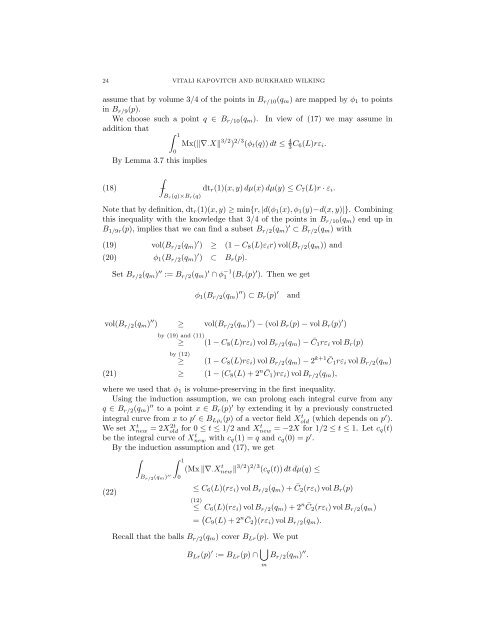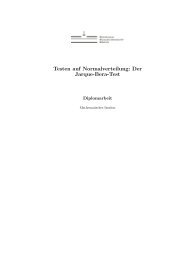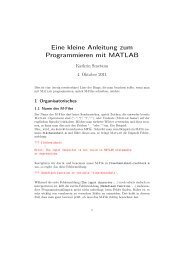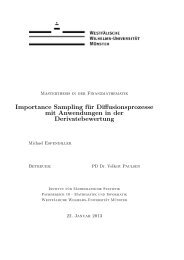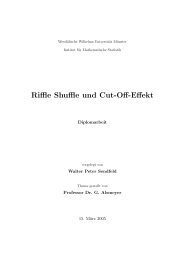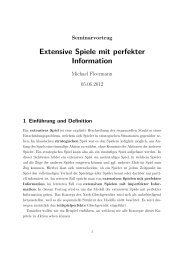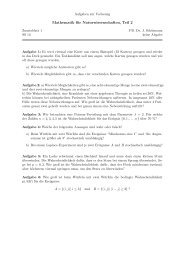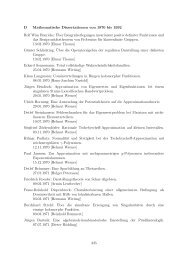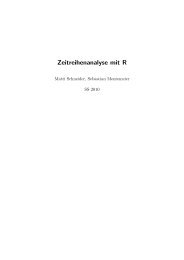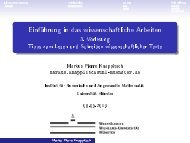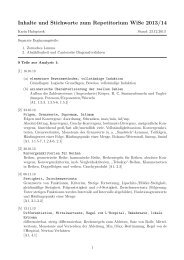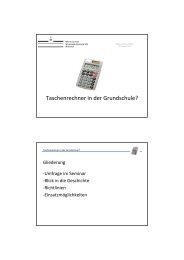Margulis Lemma
Margulis Lemma
Margulis Lemma
You also want an ePaper? Increase the reach of your titles
YUMPU automatically turns print PDFs into web optimized ePapers that Google loves.
24 VITALI KAPOVITCH AND BURKHARD WILKING<br />
assume that by volume 3/4 of the points in B r/10 (q m ) are mapped by φ 1 to points<br />
in B r/9 (p).<br />
We choose such a point q ∈ B r/10 (q m ). In view of (17) we may assume in<br />
addition that<br />
∫ 1<br />
By <strong>Lemma</strong> 3.7 this implies<br />
0<br />
Mx(‖∇·X‖ 3/2 ) 2/3 (φ t (q)) dt ≤ 4 3 C 6(L)rε i .<br />
∫<br />
(18) − dt r (1)(x, y) dµ(x) dµ(y) ≤ C 7 (L)r · ε i .<br />
B r(q)×B r(q)<br />
Note that by definition, dt r (1)(x, y) ≥ min{r, |d(φ 1 (x), φ 1 (y)−d(x, y)|}. Combining<br />
this inequality with the knowledge that 3/4 of the points in B r/10 (q m ) end up in<br />
B 1/9r (p), implies that we can find a subset B r/2 (q m ) ′ ⊂ B r/2 (q m ) with<br />
(19)<br />
(20)<br />
vol(B r/2 (q m ) ′ ) ≥ (1 − C 8 (L)ε i r) vol(B r/2 (q m )) and<br />
φ 1 (B r/2 (q m ) ′ ) ⊂ B r (p).<br />
Set B r/2 (q m ) ′′ := B r/2 (q m ) ′ ∩ φ −1<br />
1 (B r(p) ′ ). Then we get<br />
φ 1 (B r/2 (q m ) ′′ ) ⊂ B r (p) ′<br />
and<br />
vol(B r/2 (q m ) ′′ ) ≥ vol(B r/2 (q m ) ′ ) − (vol B r (p) − vol B r (p) ′ )<br />
(21)<br />
by (19) and (11)<br />
≥ (1 − C 8 (L)rε i ) vol B r/2 (q m ) − ¯C 1 rε i vol B r (p)<br />
by (12)<br />
≥ (1 − C 8 (L)rε i ) vol B r/2 (q m ) − 2 k+1 ¯C1 rε i vol B r/2 (q m )<br />
≥ (1 − (C 8 (L) + 2 n ¯C1 )rε i ) vol B r/2 (q m ),<br />
where we used that φ 1 is volume-preserving in the first inequality.<br />
Using the induction assumption, we can prolong each integral curve from any<br />
q ∈ B r/2 (q m ) ′′ to a point x ∈ B r (p) ′ by extending it by a previously constructed<br />
integral curve from x to p ′ ∈ B Lρi (p) of a vector field Xold t (which depends on p′ ).<br />
We set Xnew t = 2Xold 2t for 0 ≤ t ≤ 1/2 and Xt new = −2X for 1/2 ≤ t ≤ 1. Let c q (t)<br />
be the integral curve of Xnew t with c q (1) = q and c q (0) = p ′ .<br />
By the induction assumption and (17), we get<br />
(22)<br />
∫B r/2 (q m) ′′ ∫ 1<br />
0<br />
(Mx ‖∇·X t new‖ 3/2 ) 2/3 (c q (t)) dt dµ(q) ≤<br />
≤ C 6 (L)(rε i ) vol B r/2 (q m ) + ¯C 2 (rε i ) vol B r (p)<br />
(12)<br />
≤ C 6 (L)(rε i ) vol B r/2 (q m ) + 2 n ¯C2 (rε i ) vol B r/2 (q m )<br />
= ( C 9 (L) + 2 n ¯C2<br />
)<br />
(rεi ) vol B r/2 (q m ).<br />
Recall that the balls B r/2 (q m ) cover B Lr (p). We put<br />
B Lr (p) ′ := B Lr (p) ∩ ⋃ m<br />
B r/2 (q m ) ′′ .


